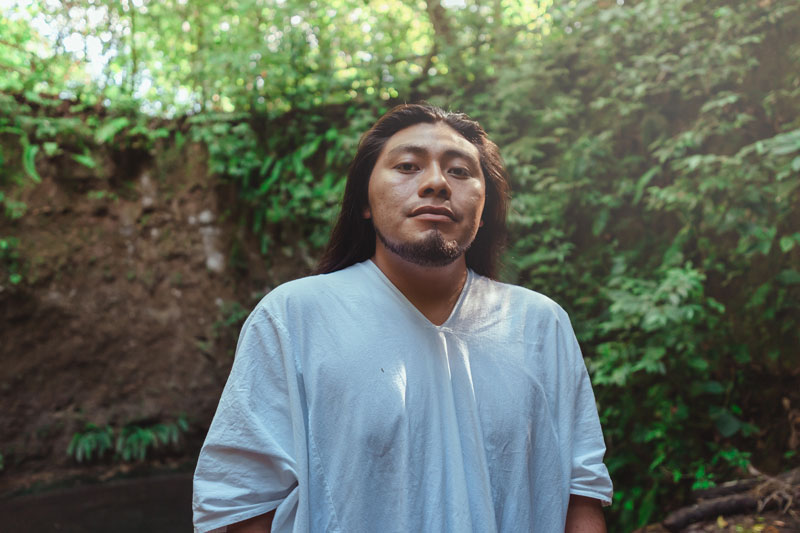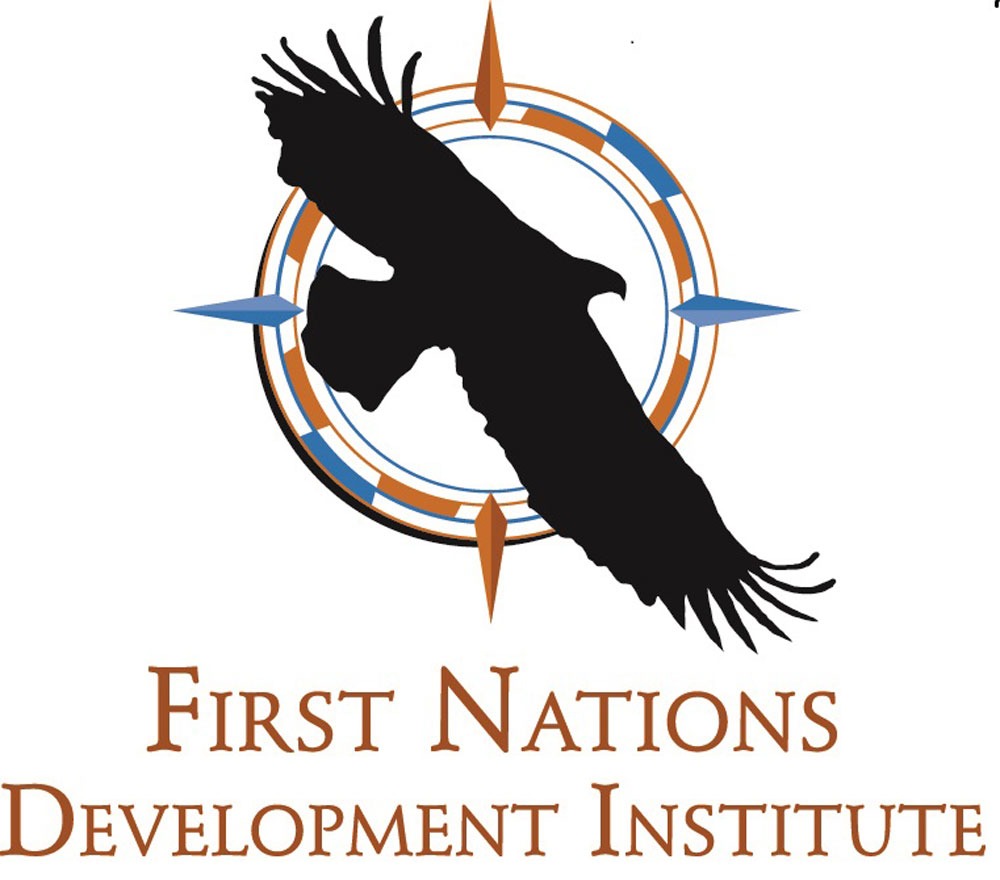
This article is the first in a new series of articles that NPQ, in partnership with First Nations Development Institute (First Nations), will publish in the coming weeks. The series will highlight leading economic justice work in Indian Country and identify ways that philanthropy might more effectively support these efforts.

“It may be that Americans will have to come face to face with the loathsome idea that their invasion of the New World was never a movement of moral courage at all; rather, it was a pseudo religious and corrupt socioeconomic movement for the possession of resources.” — Elizabeth Cook-Lynn, Why I Can’t Read Wallace Stegner and Other Essays: A Tribal Voice
The awareness hoped for by the Sioux scholar Elizabeth Cook-Lynn has been a long time arriving. The tragic murder of George Floyd on May 25, 2020 may have awakened a few. In the following weeks, millions across the US made forceful demands—for justice, an end to racial violence, and more just policies to combat structural inequalities that have repressed and disadvantaged historically excluded and marginalized groups for centuries. Native people across the country stood alongside Black communities in both urban and rural communities, holding Black Lives Matter marches and calling for an end to police violence against Black people.
Both the Black Lives Matter movement and the longstanding inequalities exposed by COVID-19 have rekindled and motivated new demands for justice within and beyond Native American communities. In Native communities, we have seen louder calls for land, environmental, and climate justice; investment in Native language and cultural programs; and even reparations. Nationally, we have seen increased media attention on Native calls for justice, political conversations focused on why Native people were and continue to be especially vulnerable to the COVID-19 pandemic, and the need for policy solutions to address longstanding inequities.
From the vantage point of Native Americans, the use of state physical and economic violence against marginalized peoples is nothing new. Since the founding of the US government, federal policies have consistently sought to exterminate, remove, dispossess, and reorganize Native nations. These efforts were aimed primarily at extracting Native lands and resources—and exterminating tribal nations’ identities and ways of political, social, and economic organization.
Native Americans have long challenged this state-sanctioned social and economic violence. In 1965, for example, relocated Native Americans formed the American Indian Movement in Minneapolis to combat police brutality and unlawful arrests and demand an end to the systemic racism, including an end to termination policies that had aimed to eliminate Native sovereignty altogether.1 Yet today Native Americans are still killed in police encounters at higher rates than members of any other racial or ethnic group, even as their stories remain largely invisible in the media.2
In 2020, amid renewed calls for justice, Native communities also battled COVID-19. The pandemic again exposed and amplified longstanding racial and class inequalities. Health and economic inequalities made Native American communities particularly vulnerable to COVID-19 infection and spread, and the history of colonization and policy neglect by federal and state governments only compounded the devastating effects of COVID-19 on Native peoples.3
The pandemic has also highlighted longstanding economic injustices. The American COVID-19 Vaccine Poll, conducted between May 7 and June 7 of 2021 by the African American Research Collaborative and the Commonwealth Fund, found that 39 percent of Native American respondents had their work hours and/or pay cut, 28 percent were unemployed and looking for work, and 29 percent reported losing their job during the pandemic. This was the highest of all racial groups in the US.
And yet, despite federal neglect, Native communities have actively designed their own solutions and mitigation strategies to keep their communities safe. Today, Native communities lead the nation in vaccination rates and are a strong example of how Indigenous self-governance benefits Native communities.
The Legacy of Federal Policy
Rising demands for justice are challenging the federal legacy of genocidal and racist policy and have created an opening for a federal investigation into historical atrocities against Native Americans.
Too often, the courts have been the only path available for Native Americans to win economic justice. It remains unclear whether such court victories will be harbingers of deeper structural change. The changes and institutions achieved to date have come about only after long, drawn-out legal battles.
For example, the Native American Agriculture Fund, a $266 million charitable trust, was created by the settlement of the landmark Keepseagle v. Vilsack class-action lawsuit in 2018, nearly 19 years after the lawsuit was filed back on the eve of Thanksgiving 1999. The plaintiffs noted that since at least 1981, the US Department of Agriculture had denied Native American farmers and ranchers nationwide the same opportunities as white farmers to obtain low-interest rate loans, resulting in billions of dollars in economic losses.
In June 2021, newly appointed US Secretary of the Interior Deb Haaland (Laguna Pueblo) announced a Federal Indian Boarding School Initiative, a comprehensive review of the troubled legacy of federal boarding school policies on Native American communities. In a press release, she wrote that the Interior Department would address the intergenerational impact of Indian boarding schools to “shed light on the unspoken traumas of the past, no matter how hard it will be.” She further noted, “I know that this process will be long and difficult. I know that this process will be painful. It won’t undo the heartbreak and loss we feel. But only by acknowledging the past can we work toward a future that we’re all proud to embrace.”
Haaland’s call for a Federal Indian Boarding School Initiative came as the remains of Indigenous children were discovered at former boarding school sites in Canada, and in the US the remains of nine children of the Rosebud Sioux Tribe were returned home, 140 years after they were sent to the Carlisle Indian School in Pennsylvania.
Native American boarding schools were created as early as 1869 and lasted until 1979. During this traumatic era, the federal government removed hundreds of thousands of Native children from their families and placed them in these schools, where they were stripped of their language, their long hair was cut, and their traditional clothing was removed. Native children were subjected to harsh punishments and forced to convert to Christianity and adopt its values.
Sign up for our free newsletters
Subscribe to NPQ's newsletters to have our top stories delivered directly to your inbox.
By signing up, you agree to our privacy policy and terms of use, and to receive messages from NPQ and our partners.
More than 365 of these schools operated throughout the century with support from the federal government, and by 1926, an estimated 83 percent of Native American school-age children were attending boarding schools across the country. Research has documented that at the height of the boarding school era, between 1877 and 1918, the United States allocated $2.81 billion (adjusted for inflation) to support the nation’s boarding school infrastructure—an educational system designed to assimilate Indigenous people into white culture and destroy Native languages. Since 2005, however, the federal government has only appropriated approximately $180 million for Indigenous language revitalization or about $12 million a year.
The Centrality of the Land
“Early assimilation policies were to steal Native American land.… If we can assimilate these Native Americans into the dominant culture then they have no need for reservations, they’re going to migrate into urban areas and there will be no need to maintain tribal lands, because they would have lost their culture, the language, all ties to what they held so sacred…and that was the land.” — Christy Abeyta, Superintendent at the Santa Fe Indian School, quoted in Unspoken: America’s Native American Boarding Schools
Native people have long resisted these devastating federal practices. Native American boarding schools were intended to be a more cost-effective solution to federal policies like the Indian Removal Act, passed by Congress in 1830 and signed into law by known “Indian killer” Andrew Jackson. The Act removed southeastern tribes to lands west of the Mississippi, thereby “opening up” former Native lands for theft and occupation.
This policy led to the Trail of Tears, a forced death march overseen by the US military, made by tens of thousands of Native people from southeastern states to “Indian Territory” in Oklahoma. During the 1,200-mile-plus walk, thousands of Native people lost their lives.
Congress originally budgeted the meager sum of $500,000 for the enormous policy of Indian Removal but ended up spending about $75 million—the equivalent of about a trillion dollars today. The price tag for the theft of Native land grew exponentially over time, justified in the name of “Manifest Destiny.” Federal troops regularly removed Native people by force, eventually confining them to reservations.
The wealth used to create many of today’s largest philanthropic organizations is not exempt from this process. Recently, Kevin Walker, president of the Northwest Area Foundation (NWAF), was explicit about this. Since 2012, NWAF has made 40 percent of its grants to Indian Country. Walker noted that many philanthropic peers have asked him why the foundation does that. His answer is simple: “It’s about where the money came from.”
In NWAF’s case, founder James Hill profited from the Great Northern Railroad, which eviscerated Native lands. “Native nations of this region found themselves on the losing end of the Foundation’s origin story,” Walker writes. Pointedly, he adds, this situation is “not specific to our founding family” but “a core element of the American story.”
For example, companies like Standard Oil, owned by John D. Rockefeller and associates, pressured the federal government to help with their negotiations with the Navajo nation. This pressure resulted in the (forced) creation of the first Navajo Nation tribal council, charged with the explicit purpose of negotiating oil leases with Standard Oil and other oil and mining companies. Thus began the exploitive resource economy on the Navajo nation, leading to still present disease and death.
Other wealthy Americans during the robber baron years, including Andrew Mellon and Andrew Carnegie, invested heavily in steel for the railroads that ran through stolen Native lands and transported stolen resources from those lands. The exploitation and theft of Native lands made these individuals and their companies rich, and their wealth later transferred to the creation of private foundations with little oversight from or accountability to the communities who suffered from this extraction. These are but a few examples of how historical wealth creation off the backs of Native people has fueled US economic development.
A Movement for Native Justice
Native people have always sought justice for the theft of their lands, the extermination of languages and identities facilitated by federal policy and dollars, and the usurpation of their sovereign rights. In American Indian Sovereignty and the US Supreme Court: The Masking of Justice, Lumbee scholar David Wilkins calls on all of us to ask “why the core democratic concepts of fairness, justice, and consent of the governed have not yet been fully realized for tribal nations and their citizens despite clearly pronounced treaty rights, federal policies of Indian self-determination and tribal self-governance, positive judicial precedents.” He argues that the courts, in collaboration with other branches of government, have historically developed legal theories that justified federal policy and neglect. In other words, it’s hard to get justice in a system that was built by the colonizers responsible for historical injustices.
Despite these institutional and structural barriers to justice, there is a growing movement to right the historical wrongs perpetuated against Indigenous peoples. In Native communities, there is new momentum, along with increasing demand for the return of Native lands and the repatriation of Native bodies and sacred objects. Nationally, a call is rising for federal acknowledgment of the genocidal policies that sought to extinguish Native identities, extract land and resources, and diminish Native nations’ sovereign rights.
But current calls for and conversations about Native justice have largely occurred at the elite level, with little input and conversation directly with Native communities. Also, a host of unknowns remain: First, we cannot fully ascertain whether Secretary Haaland has the political backing to make substantive changes in federal policy. Second, there is no national policy agenda or articulation of policy demands by Native communities in terms of what they want out of this national investigation.
The Opportunity
“They have assumed the names and gestures of their enemies, but have held on to their own secret soul, and in this there is a resistance and an overcoming, a long awaiting.” — N. Scott Momaday, House Made of Dawn
Given the current and historical context, First Nations continues its long-running partnership with Native communities seeking to understand and mobilize on their demands and identify the broader social, economic, environmental. and political factors that can advance Native justice. As Deb Haaland, the first Native American to serve as Secretary of the Interior, says, “only by acknowledging the past can we work toward a future that we’re all proud to embrace.”
Economic justice in Native communities is, like everything, rarely a one-size-fits-all. In coming weeks, you’ll hear from leading voices in Indian Country, including community development financial institution (CDFI) directors, consultants, business advisors, and more. In this series, you’ll hear from Native leaders pointing out structural inequities and calling for change. And, like the quote above, they are realizing a “long awaiting” by Native communities in creating new approaches for economic and social justice.
Notes
- Vine Deloria, Custer Died for Your Sins: An Indian Manifesto (University of Oklahoma Press, 1969); Delilah Friedler, “What Will Replace the Minneapolis Police? The City’s Native American Community Has Some Ideas,” Mother Jones (blog), June 13, 2020. Joane Nagel, “American Indian Ethnic Renewal: Politics and the Resurgence of Identity,” American Sociological Review, 1995, pp. 947-65.
- Friedler, “What Will Replace the Minneapolis Police?”; Elise Hansen, “The Forgotten Minority in Police Shootings,” CNN, November 10, 2017; and Jean Reith Schroedel and Roger J. Chin, “Whose Lives Matter: The Media’s Failure to Cover Police Use of Lethal Force Against Native Americans,” Race and Justice, October 15, 2017.
- Raymond Foxworth et al., “‘I Hope to Hell Nothing Goes Back to The Way It Was Before’: COVID-19, Marginalization, and Native Nations,” Perspectives on Politics, 2021, 1-18; Desi Rodriguez-Lonebear et al., “American Indian Reservations and COVID-19: Correlates of Early Infection Rates in the Pandemic,” Journal of Public Health Management and Practice, vol. 26, no. 4 (2020), pp. 371–77.











